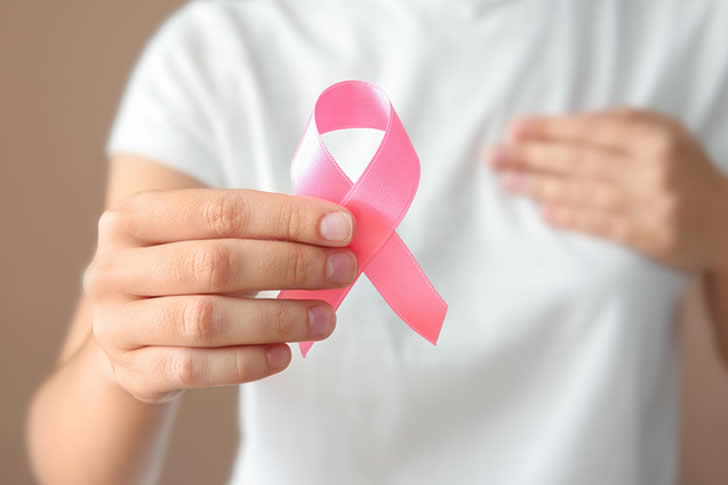Comprehensive Guide to Breast Cancer Treatment: Methods, Costs, and Patient Support
Breast cancer is one of the most common cancers affecting women worldwide, with millions diagnosed each year. In this guide, we will explore the different treatment options, associated costs, and support systems available to those affected.

Understanding Breast Cancer
What is Breast Cancer?
Breast cancer occurs when abnormal cells grow uncontrollably in the breast tissue. There are different types, including ductal carcinoma in situ (DCIS), invasive ductal carcinoma (IDC), and inflammatory breast cancer. Early detection through screening is crucial for effective treatment.
Types of Breast Cancer Treatment
Breast cancer treatment varies based on the stage, type, and other factors. Here are the main options:
- Surgery
Removes the tumor or entire breast (mastectomy). Depending on the situation, breast-conserving surgery (lumpectomy) may be an option. - Radiation Therapy
Uses high-energy rays to destroy cancer cells after surgery. - Chemotherapy
Uses drugs to target and kill fast-growing cancer cells. Often used when cancer has spread beyond the breast. - Hormonal Therapy
Blocks the effects of estrogen or lowers estrogen levels, used for hormone-receptor-positive cancers. - Targeted Therapy
Focuses on specific genes or proteins in cancer cells to slow or stop their growth. - Immunotherapy
Helps the immune system recognize and attack cancer cells.
Symptoms of Breast Cancer
Common Signs to Look Out For
Recognizing the symptoms of breast cancer early is crucial for timely diagnosis and treatment. While some cases may not exhibit noticeable symptoms, the following are common signs to be aware of:
- A lump or mass in the breast: This is the most common symptom. It may feel like a hard, painless lump with irregular edges, though some lumps can be tender or soft.
- Change in breast size or shape: Unexplained changes in the size, shape, or appearance of one breast compared to the other.
- Nipple discharge: Unusual discharge from the nipple, especially if it’s bloody, clear, or occurs without squeezing.
- Breast or nipple pain: Persistent pain in any part of the breast or the nipple, though breast cancer is not typically associated with pain.
- Skin changes: Dimpling, redness, or thickening of the skin on the breast (often described as an “orange peel” texture).
- Inverted nipple: A newly inverted or retracted nipple, particularly if it wasn’t inverted before.
- Swelling: Swelling of part or all of the breast, even if no distinct lump is felt.
How Much Do Breast Cancer Treatments Cost?
Factors Affecting Cost
Costs of breast cancer treatment can vary widely depending on:
- Type of Treatment: Surgery, chemotherapy, and radiation have different costs.
- Location: Costs can vary by region and country.
- Insurance Coverage: What is covered by health insurance, if any?
Below is a general estimate of treatment costs in the U.S.:
| Treatment Type | Estimated Cost (USD) | Notes |
|---|---|---|
| Surgery (Mastectomy) | $15,000 – $50,000 | Depends on type of surgery |
| Chemotherapy (per cycle) | $10,000 – $100,000 | Depends on drug type and number of cycles |
| Radiation Therapy | $10,000 – $50,000 | Varies depending on number of sessions |
| Hormonal Therapy | $600 – $4,000/year | For hormone receptor-positive cancers |
| Targeted Therapy | $30,000 – $150,000 | Based on treatment duration and drugs |
Questions and Answers (QA)
Q1: Can breast cancer be cured?
A1: In many cases, breast cancer can be treated successfully, especially when detected early. The treatment outcome depends on the cancer type, stage, and response to treatment.
Q2: What are the side effects of breast cancer treatments?
A2: Side effects vary by treatment:
- Surgery: Pain, scarring, and lymphedema.
- Chemotherapy: Nausea, hair loss, and fatigue.
- Radiation: Skin irritation and fatigue.
- Hormonal Therapy: Hot flashes, bone thinning, and mood swings.
Q3: How can I reduce my risk of breast cancer recurrence?
A3: Regular follow-ups, taking prescribed medications, maintaining a healthy diet, exercising, and avoiding tobacco can help reduce the risk of recurrence.
Q4: Is breast cancer treatment covered by insurance?
A4: Coverage varies by country and insurance plan. In the U.S., many insurance plans cover essential breast cancer treatments, but out-of-pocket expenses can still be significant.
Professional Analysis
Survival Rates and Treatment Effectiveness
According to studies, the 5-year survival rate for localized breast cancer (when detected early and treated) is nearly 99%. However, survival rates drop when the cancer has metastasized to other parts of the body.
Bullet List: Key Takeaways
- Early detection is crucial for better outcomes.
- Breast cancer treatment options include surgery, radiation, chemotherapy, hormonal therapy, and more.
- Costs vary widely based on treatment, location, and insurance coverage.
- Follow-up care is essential to reduce the risk of recurrence.
Latest Statistics (2024)
- New Cases: Over 300,000 women diagnosed annually in the U.S.
- Mortality Rate: Approximately 43,000 deaths each year.
- Survival Rate: 90% for all stages combined (5-year survival).
Support for Breast Cancer Patients
Psychological and Emotional Support
Being diagnosed with breast cancer is overwhelming, both physically and emotionally. Many hospitals offer counseling, and there are support groups available online and in person.
Financial Assistance Programs
Patients struggling with the cost of treatment can seek help from:
- Non-profit Organizations: Providing grants and assistance for treatment.
- Government Programs: Offering subsidies for treatment for low-income patients.
- Crowdfunding: Patients often turn to platforms like GoFundMe for support.
Conclusion
Breast cancer treatment has evolved significantly, offering various options depending on the stage and type of cancer. Patients should work closely with their healthcare team to choose the best treatment plan, taking into account both effectiveness and costs. Early detection remains the key to successful treatment and improved survival rates.
References:







Recent Comments